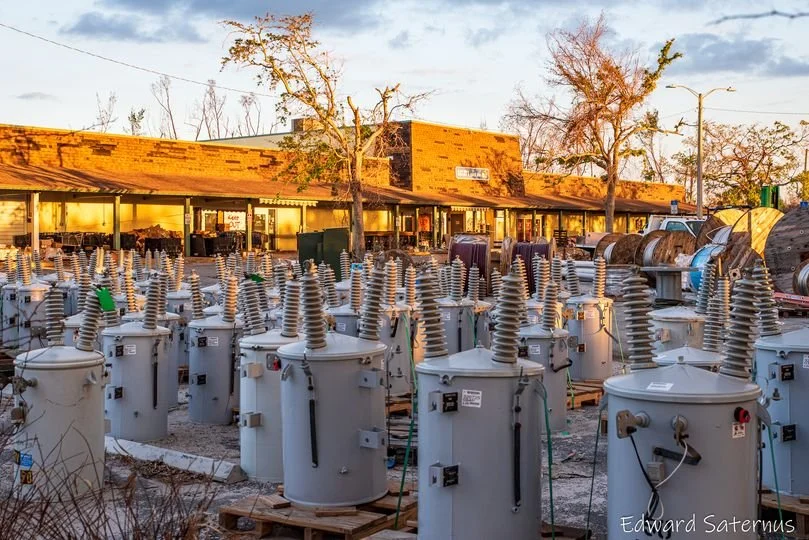Electric Construction Capital Budgeting
A capital budget for electric projects is as important as the annual operating budget
Creating a capital budget involves planning for significant long-term investments in assets or projects. Sounds easy?, but it is a combination of long-term forecasting of system needs, financing (debt and equity), and impact on rates. Here is a framework that is effective.
What are the overheads here? Labor, materials management, equipment, AFUDC
Extensive input from departments and a systematic approach yields an effective plan
Capital budgeting is part of the annual budget process, much like the operating budget. The focus should be on short (one year) and long-term goals. Given the focus and long lead times of the power industry and changing power supply goals, a long-range view of 5 - 15 years is appropriate. The long-term forecast should be updated every year.
Breaking the process down into bite-sized steps looks like this:
1. Identify Long-Term Goals: Determine the long-term goals and objectives of your utility or cooperative. Does your management and Board wish to use existing assets to the end of their useful life, or move more quickly towards other sources of supply. What market forces are impacting your organization to speed up or slow down change?
2. List Potential Projects: Make a list of projects or assets that align with long-term goals. Anticipate renewable portfolio standards, the age of existing assets, an expanding customer base, or changes in technology.
3. Forecast Costs: Estimate the costs associated with each project. Consider not just the initial cost but also ongoing operational and maintenance expenses, i.e. the cost of ownership.
Utility Accounting and Rates Specialists provides on-line/on-demand courses on operations and construction project accounting, rates, and management for new and experienced co-op and utility professionals and Board members. Click on the button to see a highlighted listing and description of our course offerings.
4. Prioritize Projects: Rank the projects based on their importance and potential return on investment. Chances are there are more projects than funding availability. There are many scoring systems devised for ranking projects, from the impact on system reliability, customer service needs, regulatory orders, storm repairs, net present value, internal rate of return, and hurdle rates. Ranking systems are used to add weights to each scoring criteria, resulting in a stratification of the projects that can be used in the decision making process.
5. Evaluate Financial Position and Funding Sources: Take stock of your co-op or utility’s financial position. Does your organization require a bond rating prior to funding? If so, evaluate financial metrics used by the ratings agencies. You can find industry playbook at the Moody’s, S&P, or Fitch websites.
6. Financial Projections: Create detailed financial projections for each project. This should include revenue forecasts, expense estimates, and a timeline for when funds will be needed.
7. Decision Making: Present the capital budget to decision-makers, such as a board of directors or senior management. Discuss and obtain approval for the proposed projects. Present the rate impact of projects so the Board will know that rates will need to be adjusted.
8. Implementation: Once the budget is approved, pick a project manager for each project and start implementing the projects according to the defined timeline and budget allocations.
9. Monitoring and Evaluation: Continuously monitor the progress of projects and compare actual results to the budget. Presentations should be made regularly in management meetings by the project manager. Make adjustments if necessary.
10. Documentation: Keep thorough records of all financial transactions related to the capital budget, including expenditures and sources of funding. Specific requirements are used for grant funded projects. Follow those requirements to avoid issues when post audit single or compliance audits are done.
Capital budgets are as important as operating budgets. They have both a short and long-term outlook that is needed in strategy planning and implementation.
About Russ Hissom - Article Author
Russ Hissom, CPA is a principal of Utility Accounting & Rates Specialists a firm that provides power and utilities rate, expert witness, and consulting services, and online/on-demand courses on accounting, rates, FERC/RUS construction accounting, financial analysis, and business process improvement services. Russ was a partner in a national accounting and consulting firm for 20 years. He works with electric investor-owned and public power utilities, electric cooperatives, broadband providers, and gas, water, and wastewater utilities. His goal is to share industry best practices to help your business perform effectively and efficiently and meet the challenges of the changing power and utilities industry.
Find out more about Utility Accounting & Rates Specialists here, or you can reach Russ at russ.hissom@utilityeducation.com.
The material in this article is for informational purposes only and should not be taken as legal or accounting advice provided by Utility Accounting & Rates Specialists. You should seek formal advice on this topic from your accounting or legal advisor.

